
© Paul Kolnik. (Click image for larger version)
New York City Ballet
La Sylphide, Bournonville Divertissements
★★★✰✰
Washington, Kennedy Center Opera House
3, 5 March 2016
www.nycballet.com
www.kennedy-center.org
The second of the two programs that New York City Ballet presented as part of their annual season at the Kennedy Center Opera House was exclusively dedicated to the works of the great Danish choreographer August Bournonville (1805-1879), comprising La Sylphide and Bournonville Divertissements, an unconventional offering for a company renowned for its neoclassical and modern repertory.
Inspired by Filippo Taglioni’s 1832 original ballet, Bournonville’s La Sylphide is 180 years old. It’s a staple of the Royal Danish Ballet and perhaps the oldest surviving Romantic ballet in the 19th-century classical ballet canon.
The NYCB production was first staged in 1985 for the Pennsylvania Ballet by the company’s ballet master in chief Peter Martins, who was born in Denmark and who danced this ballet as a student at the Royal Danish Ballet School, working his way up through various roles, eventually “graduating” to the leading role of James. In the program notes, Martins points out that he didn’t make any changes to Bournonville’s version of the ballet: “There is virtually nothing of me in the production. I simply went back to the essential La Sylphide. This is the Romantic ballet that I was brought up on; this is Bournonville as I know it,” adding that his only change was the elimination of the intermission between the first and second acts.

© Paul Kolnik. (Click image for larger version)
Set in Scotland, La Sylphide tells a tragic story of a young man, who, on his wedding day, meets an enchanting woodland spirit and loses his heart – and his mind – to her captivating charms. The lovely apparition with tiny wings and delicate features, the Sylph, lures the awestruck James into the woods, away from his fiancée Effie, showing him plentiful wonders and mysteries of the magic forest, inhabited by the ethereal sylphides. When the lovesick hero, tricked into deception by the evil witch Madge, attempts to keep the ever-elusive Sylph at his side, forever earthbound, the beautiful creature suddenly expires: she sheds her wings, goes blind and dies, leaving James to suffer and grieve for the rest of his life.
In his staging, Martins not only removes the intermission, thus shortening the performance time, he also accelerates the pace of the events. It feels as if the story rushes at you with a kind of animated vigor, acquiring a comic spirit in the process. In fact, in this production, a chain of misfortunes that occur to the young James feels less like a drama and more like a comedy, albeit with an unfortunate, tragic end. As such, the production, danced to perfection on both nights I attended, is stimulating and utterly entertaining but devoid of any sense of Romantic poetry, nuance and nostalgia.
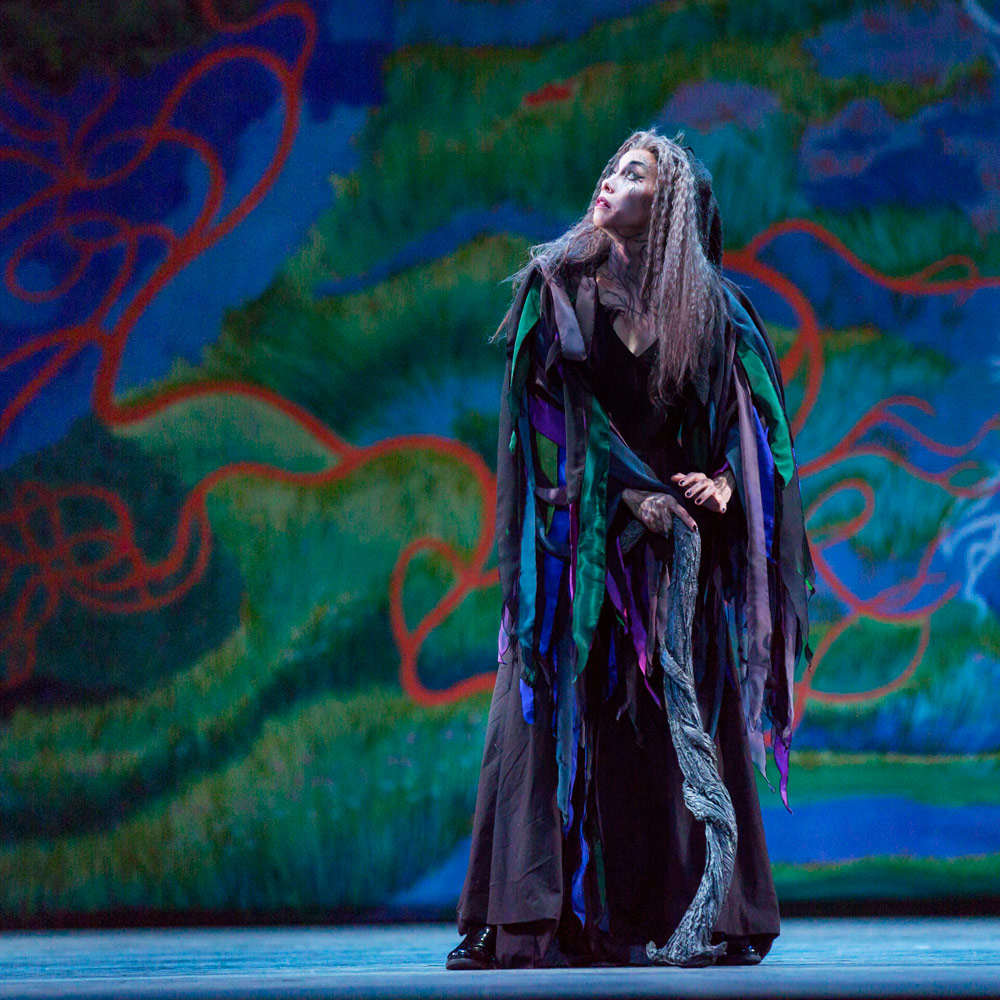
© Paul Kolnik. (Click image for larger version)
On opening night, Sterling Hyltin danced the title role with a fascinating lightness and charm. She was alluring and mysterious in the first act; playful and teasing in the forest scene of the second act; and endlessly poignant in her heroine’s sorrowful demise. Andrew Veyette was somewhat wooden as James; yet his disaccord with the malevolent Madge resonated with an ample force and his penitence in the ballet’s final moments was as genuine and heart-rending as it was profound. The excellent Georgina Pazcoguin delivered the portrayal of Madge with a mix of venomous outrage and gleeful scorn. Her hatred towards the arrogant James felt real; and her wicked “collaboration” with Gurn (Daniel Ulbricht), the lucky guy who at the end gets the girl of his dreams, never seemed to lose its comic momentum.
In the second cast, Tiler Peck infused the role of the Sylph with an increasing sense of liveliness and child-like mischief. Hers was a truly unorthodox reading of this role, a modern spin with an emphasis on comedy. Her heroine was so vibrant and cheerful, so full of energy and life that her death at the end of the ballet felt all the more devastating. Gonzalo Garcia gave a potent rendition of the role of James, his dancing and acting impeccable throughout. Gwyneth Muller was overly eccentric rather than menacing as Madge; Troy Schumacher impressed with his technique and his comic timing as the sneaky Gurn; and Lauren King was admirable as a fickle Effie. The superb corps de ballet was strong and precise throughout, giving full measure to Bournonville’s intricate steps.
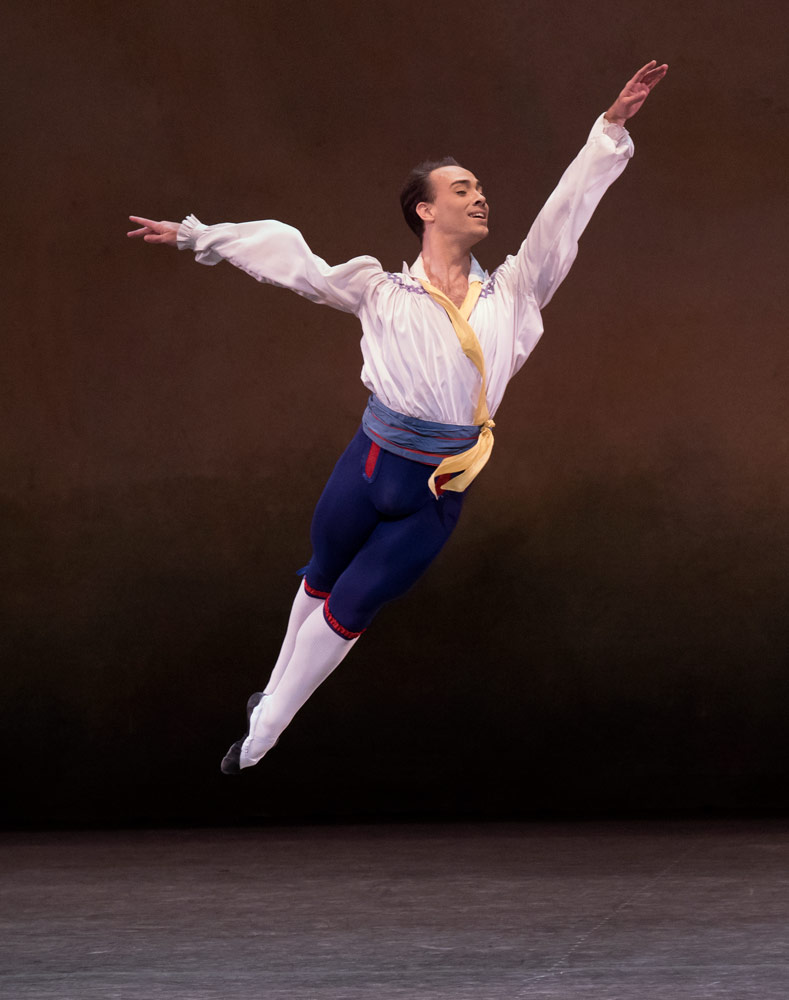
© Paul Kolnik. (Click image for larger version)
The program opened with Bournonville Divertissements (1977), a medley of dances from Napoli, Flower Festival in Genzano, and Abdallah. This series of excerpts from some of Bournonville’s most popular works was originally created by Stanley Williams, a former principal dancer with the Royal Danish Ballet, who, at George Balanchine’s invitation, joined the faculty of the School of American Ballet in 1964.
Dancing with her usual divine facility, which encapsulates not only impeccable technique but also incisive dramatic expression, Sara Mearns, partnered by the terrific Tyler Angle, exuberantly claimed the entire piece, starring in Pas de Deux from Flower Festival and dazzling in the culminating “Tarantella.” I was fortunate to see her performance twice – she led the same cast on both evenings that I attended.










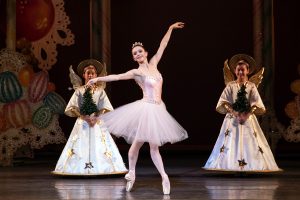
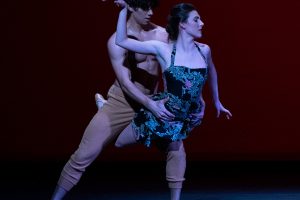

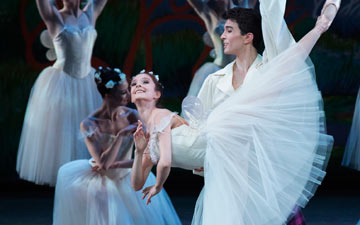

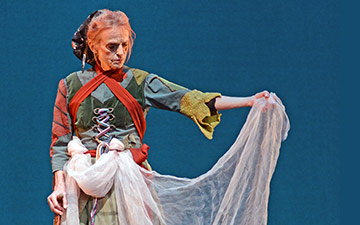
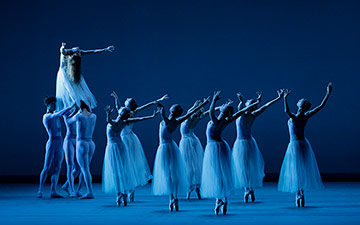
You must be logged in to post a comment.